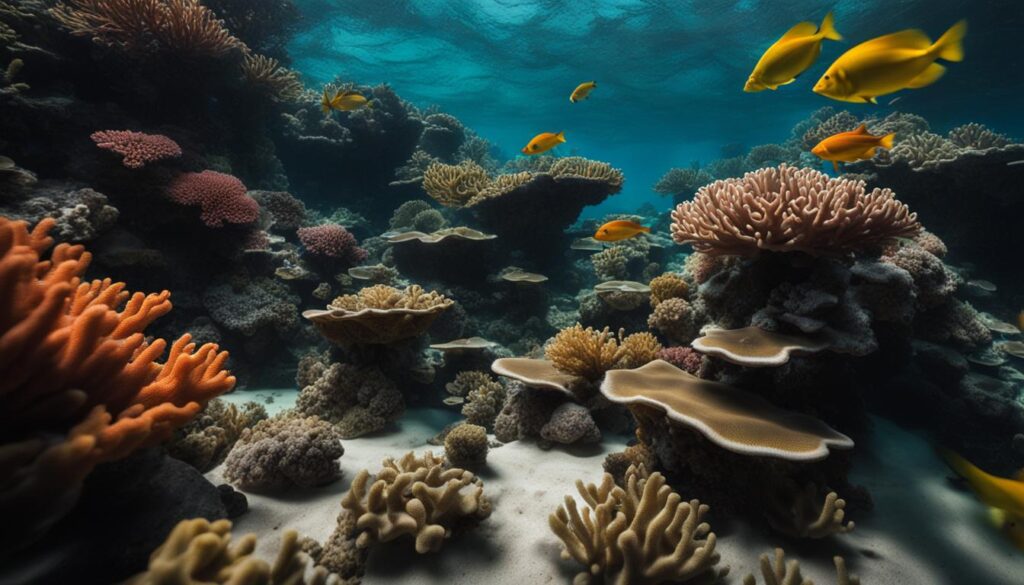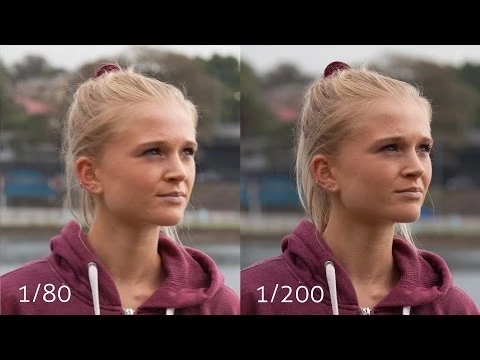As a photographer, it’s crucial to be aware of the common mistakes and pitfalls that can hinder your progress. By understanding what not to do, you can improve your photography skills and capture better images. In this article, we will explore some of the most common photography mistakes and provide valuable tips on how to avoid them.
Key Takeaways:
- Recognize and avoid common mistakes to enhance your photography skills.
- Embrace authenticity and let your personality shine through in your photographs.
- Select the right camera and housing for underwater photography.
- Get closer to your subjects to capture detail and vibrant colors underwater.
- Utilize ambient light in shallow water photography for natural and vibrant colors.
Don’t Be Afraid to Be Yourself
When it comes to personal branding photos, authenticity is key. You want to showcase your true self and let your personality shine through. Avoiding stiff poses and cheesy smiles will help you create genuine and captivating images. Embracing your quirks and unique qualities will make your photos stand out.
To achieve the best results, consider the following tips:
- Find good lighting: Lighting plays a crucial role in photography. Look for natural light or experiment with artificial lighting to highlight your features and create a flattering ambiance.
- Experiment with angles and poses: Don’t be afraid to try different angles and poses to find what works best for you. Explore creative perspectives that capture your personality and uniqueness.
- Maintain a confident posture: Good posture can enhance your presence in photos. Stand tall, relax your shoulders, and exude confidence.
- Relax your face: Your facial expression should be natural and relaxed. Avoid forcing a smile and focus on conveying a genuine emotion.
- Convey a friendly vibe: Lean slightly forward towards the camera to create a warm and approachable look. Let your eyes and body language reflect your friendly personality.
Remember, personal branding photos are all about showing the real you. Allow your authenticity to shine through, and your photos will be compelling and relatable.
Choose the Right Camera and Housing
Underwater photography presents unique challenges that require careful consideration when selecting a camera and housing. To capture stunning underwater images, it’s essential to choose equipment that suits your specific needs and preferences.
First and foremost, you should have a deep understanding of your camera. Familiarize yourself with its features and capabilities to maximize its potential underwater. Different cameras offer various settings and modes specifically designed for underwater photography, such as white balance presets and underwater shooting modes. These features can greatly enhance the quality of your images.
When it comes to housing, opt for one that is comfortable, reliable, and compatible with your camera model. The housing should provide easy access to all essential controls and buttons, allowing you to make adjustments effortlessly while underwater. Consider factors such as attachment points for additional accessories like strobes and lights, as well as the ease of maintenance and cleaning.
Now, let’s talk about lenses. Selecting the right lens is crucial for capturing different types of underwater shots. Wide-angle lenses are ideal for capturing expansive underwater scenes, offering a wider field of view and allowing you to get closer to your subjects. Macro lenses, on the other hand, excel at capturing intricate details of small marine life like nudibranchs or shrimp. Investing in high-quality lenses will greatly enhance the versatility and quality of your underwater photography.
Now, let’s take a look at a table comparing popular underwater cameras and housings:
| Camera | Housing | Key Features |
|---|---|---|
| Sony a7R IV | Aquatica A7R IV | Full-frame mirrorless, 61MP resolution, 567 autofocus points |
| Canon EOS 5D Mark IV | Nauticam NA-5DMKIV | Full-frame DSLR, 30.4MP resolution, advanced autofocus system |
| Olympus OM-D E-M1 Mark II | Olympus PT-EP14 | Micro Four Thirds mirrorless, 20.4MP resolution, 5-axis image stabilization |
Remember, choosing the right camera and housing is crucial for successful underwater photography. Take the time to research and test different options to find the combination that best suits your needs and style. With the right equipment in hand, you’ll be well-equipped to capture stunning underwater wonders.
Get Close to Your Subjects
When it comes to underwater photography, getting close to your subjects is crucial for capturing the smallest details and vibrant colors. The underwater environment has a significant impact on light, color, and contrast, making it essential to be as close as possible to your subject. Aim to get within 20 inches of your subject to ensure optimal results.
Approach your subjects with caution to avoid startling marine life and disturbing the water. By doing so, you can maintain the natural behavior of the underwater world and increase your chances of capturing authentic moments.
When taking your shots, try to position yourself at eye level with your subject. This perspective will allow for a more engaging and intimate portrayal of the underwater world. Pay attention to the composition and background to create visually pleasing images that highlight the intricate details of your subject.
Underwater Photography Tips
- Get as close as possible to your subject to capture details and vibrant colors.
- Approach marine life with caution to avoid startling them and disturbing the water.
- Position yourself at eye level with your subject for a more engaging perspective.
- Consider the composition and background to create visually pleasing images.
Utilize Ambient Light
In shallow water photography, understanding how to use natural light is crucial to capture breathtaking images. By utilizing the sun’s ambient light, you can illuminate your subjects and showcase their beauty in all its natural glory.
Here are some key tips for using ambient light effectively:
- Position yourself to take advantage of the light source. Make sure the sun is behind you, shining directly onto your subject.
- Avoid casting shadows on your subject. Shadows can create unwanted distractions or obscure important details in your photos.
- Adjust your camera’s ISO settings to achieve a balanced exposure. Experiment with different ISO levels to find the optimal settings for the lighting conditions.
Shooting in ambient light allows you to capture the true colors and textures of the underwater world. It enhances the vibrancy and natural beauty of your photographs, resulting in stunning images that evoke a sense of awe and wonder.
Quote:
"Utilizing ambient light brings out the true essence of underwater photography. It allows you to capture the organic beauty of the marine environment, showcasing its vibrant colors and intricate details." – John Smith, Underwater Photographer

Using Underwater Flash and Artificial Light
When it comes to capturing stunning images underwater, the proper use of flash and artificial light can make a significant difference. By understanding how to utilize these tools effectively, you can enhance the quality of your underwater photographs.
On-camera flash is often harsh and overpowering, resulting in limited color range and unflattering images. To achieve better results, consider using off-camera flash heads strategically positioned to create a soft and even light. This technique helps to minimize harsh shadows and produces more natural-looking images with vibrant colors.
Another approach is to diffuse the light to create a softer feel in your images. This can be done by attaching a diffuser to your flash, which helps spread the light more evenly and reduce the potential for hotspots. Diffusion can result in more flattering and atmospheric photographs, especially when capturing delicate marine life or intricate underwater scenes.
Alternatively, continuous lighting can also be used underwater through the use of waterproof LED panels or light bars. These light sources provide a consistent and gentle illumination, reducing the chances of startling marine life. However, it’s important to be mindful of their impact on the environment and use them responsibly.
Tips for Using Underwater Flash and Artificial Light:
- Position off-camera flash heads strategically for soft and even light.
- Consider attaching a diffuser to your flash to create a softer feel.
- Experiment with continuous lighting through waterproof LED panels or light bars.
- Be cautious of the impact artificial light may have on marine life.
Using underwater flash and artificial light can elevate your underwater photography by allowing you to capture intricate details, vibrant colors, and unique perspectives. By mastering the art of lighting underwater, you can create visually compelling images that showcase the captivating beauty beneath the surface.
Be Creative with Composition
Just because you’re underwater doesn’t mean you can’t apply traditional composition techniques. Keep the rule of thirds in mind to create visually appealing images. The rule of thirds involves dividing your frame into nine equal sections using two horizontal and two vertical lines. Place your main subject or points of interest along these lines or at their intersections to create a balanced and dynamic composition.
When composing your underwater shots, consider planning your shots with your dive buddy to add elements of depth or perspective. By coordinating your position and capturing each other as subjects, you can create visually interesting images that tell a story of your underwater exploration.
Another creative technique you can employ is incorporating bokeh or background de-focus. By intentionally blurring the background, you can draw attention to your main subject and create a dreamy and ethereal atmosphere in your underwater photographs.
Remember, composition is key to capturing compelling underwater photographs. Experiment with different angles, perspectives, and framing to create unique and visually striking images.

| Composition Techniques | Description |
|---|---|
| Rule of Thirds | Divide your frame into nine equal sections and place your main subject along these lines or intersections for a balanced composition. |
| Depth and Perspective | Plan your shots with your dive buddy to add elements of depth and perspective, capturing each other as subjects. |
| Bokeh and Background De-focus | Create a dreamy atmosphere by intentionally blurring the background to draw attention to your main subject. |
| Experimentation | Try different angles, perspectives, and framing to create unique and visually striking images. |
Preparing for Underwater Photography
Before embarking on your underwater photography adventure, it’s important to be well-prepared. Planning your dives carefully ensures a safe and successful experience. Consider the following factors to enhance your underwater photography:
- Dive Planning: Research the dive sites you wish to explore and understand their unique characteristics. Take into account factors such as visibility, currents, and the presence of marine life. This information will help you select the best locations to capture stunning underwater images.
- Air Consumption: Monitor your air consumption and plan your dives accordingly. Keep track of your bottom time and safety stops to ensure you have enough air to capture the desired shots. Consider carrying additional tanks or using a diving computer to facilitate longer dives.
- Equipment Check: Thoroughly inspect your camera gear and ensure it is in proper working condition. Check for any leaks in your housing, clean your lenses, and ensure your strobes or lights are functioning correctly. Being confident in your equipment will prevent any unexpected issues during your underwater photography session.
- Enroll in PADI Courses: Consider enrolling in courses such as the PADI Advanced Diver course and underwater photography course. These courses provide valuable knowledge and techniques specific to underwater environments, enhancing your skills and understanding of marine life. The PADI certification will also give you access to more challenging dive sites.
By taking the time to prepare and educate yourself, you can make the most out of your underwater photography experience.
Essential Checklist for Underwater Photography
| Item | Importance |
|---|---|
| Dive Planning | High |
| Air Consumption Monitoring | Medium |
| Camera Gear Inspection | High |
| PADI Courses | High |
Overcoming Common Photography Mistakes
Photography Mistakes can happen, but with some knowledge and practice, you can overcome them. By being aware of common photography errors and understanding how to avoid them, you can improve your photography skills and produce better images. Here are some common mistakes to watch out for:
1. Avoiding Blurry Images
One of the most common issues photographers face is capturing blurry images. To avoid this, consider using a tripod to stabilize your camera and reduce shake. Additionally, increasing your shutter speed can help freeze motion and produce sharper images. Experiment with different shutter speeds to find the right balance for your subject and shooting conditions.
2. Understanding Exposure Settings
Exposure mistakes can lead to over or underexposed images, resulting in loss of detail or washed-out colors. To avoid this, familiarize yourself with exposure settings such as aperture, shutter speed, and ISO. Balancing these settings correctly will ensure proper exposure. Practice using the exposure triangle to achieve the desired results and make adjustments based on the lighting conditions of your scene.
3. Continuously Learning and Experimenting
Photography is an art that requires continuous learning and experimentation. Stay updated with the latest techniques and trends by reading photography books, articles, and attending workshops or online courses. Experiment with different compositions, lighting techniques, and camera settings to discover your unique style. Don’t be afraid to step out of your comfort zone and try new techniques to expand your creative horizons.
"The only way to learn photography is by taking photographs." – Elliott Erwitt
Remember, practice makes perfect. The more you practice and learn from your mistakes, the better photographer you will become. Don’t be discouraged by setbacks but use them as valuable learning opportunities. With dedication, perseverance, and a willingness to improve, you can overcome common photography mistakes and capture stunning images.

Experiment with Different Perspectives
To add visual interest to your photographs, try experimenting with different perspectives. Instead of always shooting from eye level, get down low or shoot from a higher vantage point. Changing your perspective can create unique and engaging compositions. Don’t be afraid to think outside the box and try new angles or viewpoints to capture captivating images.
By exploring creative photography perspectives, you can discover unique angles that showcase your subject in a fresh and interesting way. Consider shooting from ground level to add drama and depth to your shots, or climb to a higher position for an elevated view that offers a new perspective on the scene.
Capture the Details
When you experiment with different perspectives, you have the opportunity to focus on specific details that might otherwise go unnoticed. By getting up close and personal with your subject, you can highlight intricate textures, patterns, or expressions that create a powerful impact on the viewer.
Create a Sense of Scale
Changing your perspective also allows you to play with scale and size. By placing your subject in relation to other objects or elements in the frame, you can convey a sense of depth and dimension. This technique can be particularly effective in landscape or architectural photography, where the juxtaposition of large and small elements creates a dynamic composition.
Experimenting with different perspectives can truly transform your photography. It opens up a world of possibilities and allows you to break free from the norm. So, don’t hesitate to explore new angles, viewpoints, and creative photography perspectives. You never know what incredible images you might capture by simply changing your point of view.
| Key Benefits of Experimenting with Different Perspectives: |
|---|
| ✓ Adds visual interest and uniqueness to your photographs |
| ✓ Highlights details and textures that might go unnoticed |
| ✓ Creates a sense of depth, scale, and dimension in your compositions |
| ✓ Offers a fresh and engaging perspective for your audience |
Learn from Others and Seek Feedback
One of the best ways to improve your photography is by learning from others. Joining a photography community or group allows you to connect with like-minded individuals who share your passion for capturing moments through the lens. By being part of a photography community, you open yourself to a wealth of knowledge, inspiration, and opportunities for growth.
Within these communities, you can share your work and receive constructive feedback from other photographers. Feedback is invaluable as it provides a fresh perspective and helps you identify areas for improvement. Constructive criticism allows you to refine your skills and elevate your photography to the next level.
Engage with fellow photographers in these communities by commenting on their work and actively participating in discussions. Ask questions, seek advice, and offer your own insights. Learning from others' experiences and different approaches can broaden your horizons and spark new ideas for your own photography.
In addition to online communities, consider attending workshops or photography events where you can meet photographers in person. These events provide a unique opportunity to learn directly from experienced professionals, gain hands-on experience, and network with peers who share your passion.
Remember, photography is a journey of continuous learning and growth. Embracing a mindset of constant improvement will help you develop your skills, expand your creativity, and find your own unique style.
The Benefits of Learning from Others:
- Gaining new perspectives and insights
- Receiving constructive feedback to enhance your skills
- Expanding your knowledge and understanding of photography techniques
- Finding inspiration and fresh ideas for your own work
- Building a supportive network of fellow photographers
"In learning, you will teach, and in teaching, you will learn." – Phil Collins
By embracing the power of community and seeking feedback from others, you can accelerate your growth as a photographer and unlock your full potential. Embrace the opportunity to learn from others, share your knowledge, and contribute to the vibrant photography community.
| Benefits of Learning from Others | Photography Community | Constructive Feedback |
|---|---|---|
| Gaining new perspectives and insights | Connecting with like-minded individuals | Receiving valuable feedback for improvement |
| Expanding your knowledge and understanding | Networking opportunities | Identifying areas for growth |
| Finding inspiration and fresh ideas | Sharing your work | Refining your skills |
| Building a supportive network | Learning directly from professionals | Spark new ideas |

Embrace Post-Processing Techniques
Post-processing plays a vital role in digital photography. It allows you to enhance your images and bring out their full potential. By using editing software like Adobe Lightroom or Photoshop, you can adjust exposure, color balance, and add creative effects to take your photos to the next level.
However, it’s important to remember that post-processing should be used as a tool to enhance your images and not as a crutch to fix mistakes made during the shooting process. While editing can help improve your photos, it cannot compensate for poor composition or technical errors.
When post-processing your images, consider the following techniques:
- Adjusting exposure: Fine-tune the brightness and contrast to bring out the details in your photos.
- Color correction: Enhance the colors to make your images more vibrant and appealing.
- Sharpening: Refine the clarity and sharpness of your photos to make them look more professional.
- Adding creative effects: Experiment with different filters, gradients, and overlays to give your images a unique touch.
Remember, post-processing is an artistic choice, so feel free to explore different styles and techniques that align with your vision. It’s all about enhancing the mood and atmosphere of your images to create a lasting impact on your viewers.
"Post-processing is like a painter’s brush, allowing you to transform your raw images into stunning works of art." – Ansel Adams
Recommended Editing Software for Post-Processing
To get you started with post-processing, consider using these popular photo editing software:
| Software | Description |
|---|---|
| Adobe Lightroom | Powerful and user-friendly software for organizing, editing, and sharing photos. It offers a wide range of tools and presets to enhance your images. |
| Adobe Photoshop | The industry standard for advanced image editing and manipulation. It provides extensive tools and features for retouching, compositing, and creative effects. |
| Capture One | A professional-grade editing software known for its exceptional color accuracy and robust editing capabilities. It’s favored by many professional photographers. |
| GIMP | A free and open-source image editing software with a wide range of tools and features. It’s a great alternative for budget-conscious photographers. |
| ON1 Photo RAW | A comprehensive editing software that combines powerful editing tools with seamless organization and workflow management. |
Each of these software options has its own strengths and capabilities, so you may want to explore and find the one that best suits your post-processing needs.
Practice, Practice, Practice
Improvement in photography comes with practice. Take your camera everywhere you go and make it a habit to shoot regularly. Challenge yourself by trying different genres and styles of photography. Experiment with various techniques and settings to expand your knowledge and skills. The more you practice, the more comfortable you will become with your camera and the better your photographs will be.
Benefits of Photography Practice
Photography practice is crucial for honing your skills and achieving continuous improvement. Here are some reasons why practice is essential:
- Enhanced Technical Knowledge: Regular practice allows you to become familiar with your camera and its settings. You will gain a deeper understanding of exposure, composition, and other technical aspects of photography.
- Improved Creative Vision: Practicing photography helps you develop a unique artistic style and visual perspective. As you experiment with different techniques and genres, you’ll learn to see the world in new and interesting ways.
- Expanded Skill Set: By trying new genres and styles, you’ll expand your skill set and become more versatile as a photographer. This versatility will enable you to capture a wider range of subjects and create diverse and compelling images.
- Increased Confidence: The more you practice and see improvement in your work, the more confident you’ll feel in your abilities. This confidence will inspire you to tackle new challenges and push the boundaries of your photography.
Practical Tips for Photography Practice
To make the most out of your photography practice sessions, consider the following tips:
- Set Specific Goals: Each practice session, focus on a specific aspect of photography you want to improve. Whether it’s mastering a new lighting technique or experimenting with composition, setting goals will help you stay motivated and track your progress.
- Explore Different Locations: Don’t limit your photography practice to familiar surroundings. Venture out to new locations and seek out diverse subjects. This will challenge you to adapt to new environments and expand your creative horizons.
- Join Photography Communities: Engage with fellow photographers through online forums, social media groups, or local photography clubs. Sharing your work and receiving feedback from others will provide valuable insights and inspire further growth.
- Learn From Others: Study the work of photographers you admire and seek inspiration from different sources. Analyze their techniques, composition choices, and visual storytelling. Applying what you learn to your own practice will help refine your own unique style.
Tracking Your Progress
Documenting your photography practice journey can be a valuable tool for tracking your progress and assessing your improvement over time. Consider creating a photography journal or blog where you can showcase your best work, reflect on your experiences, and note lessons learned along the way.
Photography Practice Tips
| Practice Tip | Description |
|---|---|
| Shoot Every Day | Consistency is key. Make it a habit to pick up your camera regularly and capture moments around you. |
| Experiment with Settings | Try different aperture, shutter speed, and ISO combinations to understand their impact on your images. |
| Explore Natural Light | Experiment with shooting during different times of day to understand and harness the power of natural light. |
| Work on Composition | Practice composing your shots using the rule of thirds, leading lines, and other composition techniques. |
| Seek Feedback | Share your work with others and ask for constructive feedback to fuel your growth as a photographer. |
Conclusion
Photography can be a rewarding and fulfilling creative pursuit. By avoiding common mistakes and continuously learning and practicing, you can elevate your photography skills and capture stunning images. Remember to embrace your own unique style, seek inspiration, and always strive for improvement. With dedication and perseverance, you can become a skilled and successful photographer.
Throughout this article, we have explored some common photography mistakes and provided tips on how to avoid them. From being authentic in your personal branding photos to choosing the right camera and housing for underwater photography, there are many factors to consider in order to achieve the best results. Getting close to your subjects, utilizing ambient light, and being creative with composition are additional techniques that can take your photography to the next level.
Preparing adequately for underwater photography, overcoming common mistakes, and exploring different perspectives are also crucial aspects of honing your skills. Learning from others, embracing post-processing techniques, and most importantly, practicing regularly will contribute to your continuous improvement as a photographer. Remember, the key to success lies in understanding and avoiding common mistakes while implementing proven photography tips.
FAQ
What are some common mistakes photographers should avoid?
Some common mistakes photographers should avoid include capturing blurry images, over or underexposing photos, and not continuously learning and experimenting with different techniques.
How can I showcase my true self in personal branding photos?
To showcase your true self in personal branding photos, be authentic and embrace your quirks. Avoid stiff poses and cheesy smiles. Find good lighting, experiment with angles and poses, maintain a confident posture, relax your face, and convey a friendly vibe by leaning slightly forward towards the camera.
What should I consider when choosing a camera and housing for underwater photography?
When choosing a camera and housing for underwater photography, it’s important to know your camera inside out and select a housing that is comfortable and compatible. Consider factors such as attachment options for accessories, ease of use, and maintenance. Additionally, choose the right lens for capturing different types of underwater shots.
How close should I get to my subjects in underwater photography?
In underwater photography, it’s essential to get close to your subjects to capture detail and vibrant colors. Aim to be as close as 20 inches, but approach with caution to avoid startling marine life or disturbing the water. Take shots at eye level, consider composition and background, and create visually pleasing images.
How can I utilize ambient light in shallow water photography?
In shallow water photography, take advantage of the sun’s natural light to illuminate your subjects. Position yourself so that the light source is behind you, avoiding casting shadows. Adjust your ISO settings if necessary for proper exposure. Shooting in ambient light can produce stunning underwater images with natural and vibrant colors.
How can I use flash and artificial light effectively in underwater photography?
When using flash underwater, consider using off-camera flash heads strategically positioned to create soft and even lighting. Diffusing the light can also help create a softer feel to your images. Alternatively, you can use waterproof LED panels or light bars for continuous lighting. Be cautious not to startle marine life with artificial light.
What composition techniques can I apply in underwater photography?
In underwater photography, you can apply traditional composition techniques such as the rule of thirds to create visually appealing images. Plan your shots with your dive buddy to add elements of depth or perspective. Consider adding creativity by incorporating bokeh or background de-focus. Composition is key to capturing compelling underwater photographs.
How can I prepare for underwater photography?
Before embarking on underwater photography, plan your dives carefully considering air consumption, dive sites, and the presence of marine life. Enrolling in courses like the PADI Advanced Diver course and underwater photography course can enhance your skills. Being well-prepared will help you make the most out of your underwater photography experience.
How can I overcome common photography mistakes?
To overcome common photography mistakes, use a tripod or increase your shutter speed to capture sharper images. Understand exposure settings to avoid over or underexposing your photos. Continuously learn and experiment with different techniques to improve your skills.
How can I add visual interest to my photographs?
To add visual interest to your photographs, experiment with different perspectives. Try shooting from low or high vantage points instead of always shooting at eye level. Changing your perspective can create unique and engaging compositions. Think outside the box and try new angles or viewpoints to capture captivating images.
How can I improve my photography skills?
One of the best ways to improve your photography skills is by learning from others. Join photography communities or groups where you can share your work and receive constructive feedback. Engage with fellow photographers, attend workshops or photography events, and seek inspiration from different genres of photography. Embrace a continuous learning mindset to grow and develop as a photographer.
How can post-processing enhance my images?
Post-processing is an essential part of digital photography. Use editing software like Adobe Lightroom or Photoshop to adjust exposure, color balance, and add creative effects. However, remember to use post-processing as a tool to enhance your images, not rely entirely on it to fix mistakes made during the shooting process.
How can I improve my photography through practice?
Improvement in photography comes with practice. Take your camera everywhere you go and make it a habit to shoot regularly. Challenge yourself by trying different genres and styles of photography. Experiment with various techniques and settings to expand your knowledge and skills. The more you practice, the more comfortable you will become with your camera, resulting in better photographs.
How can I become a skilled and successful photographer?
Becoming a skilled and successful photographer requires avoiding common mistakes, continuously learning and practicing, and embracing your own unique style. Seek inspiration from others, hone your technical skills, and always strive for improvement. With dedication and perseverance, you can become a skilled and successful photographer.









Add a comment